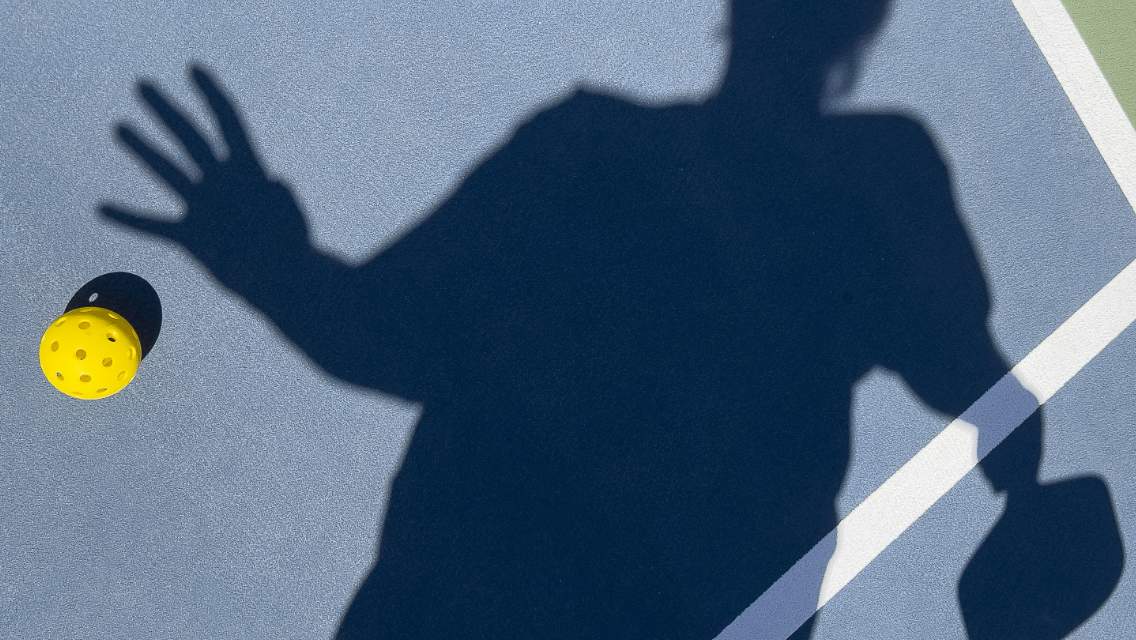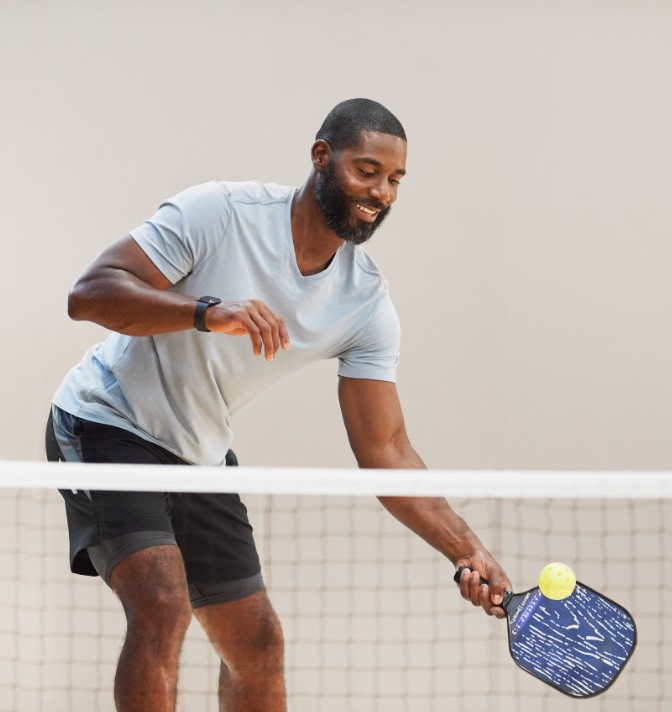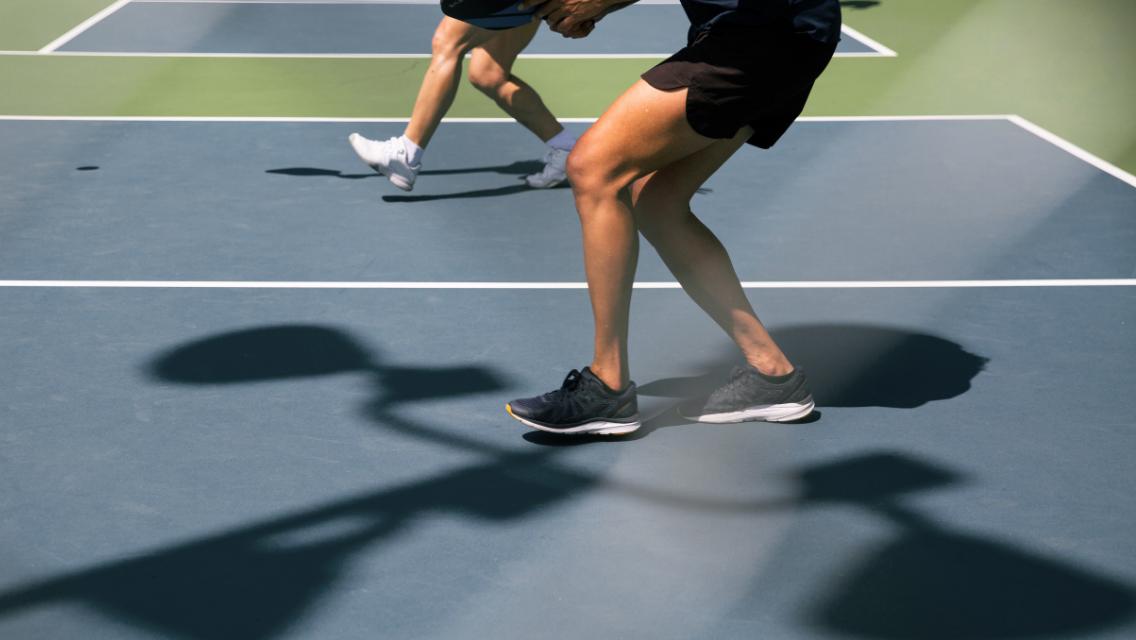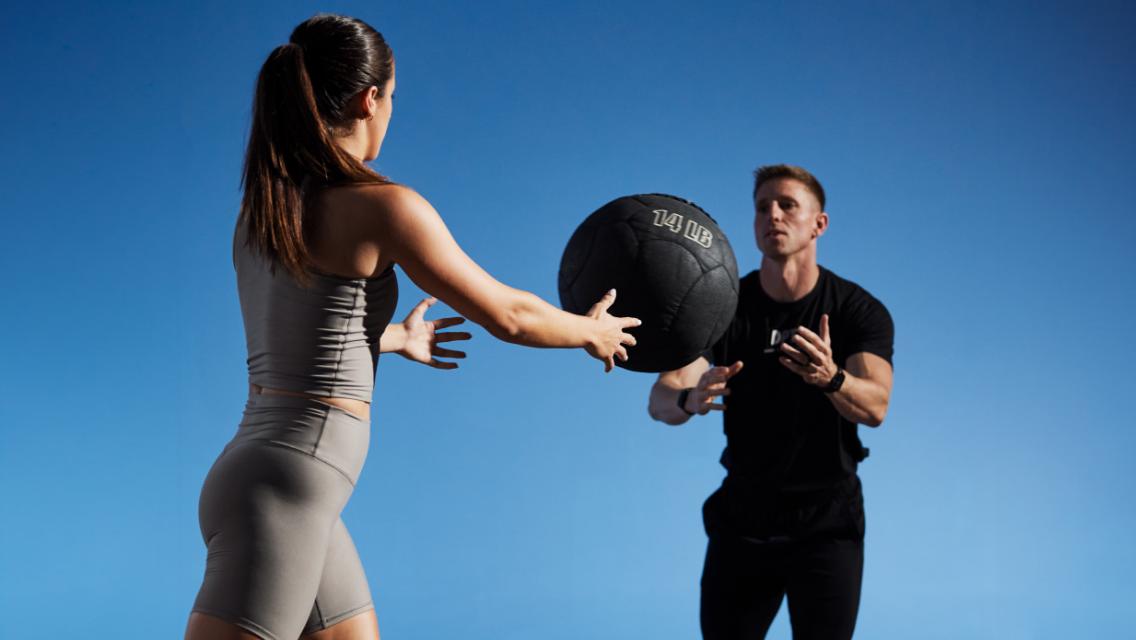Have you ever watched a game between experienced pickleballers and been in awe of the dominant shots? Or perhaps the way an opponent ends a point with one strategic ball placement? Understanding how to play pickleball is one thing — but strategically evolving your skill in the sport is another.
Being able to read an in-play situation and quickly respond with the best shot is critical for advanced players — or anyone looking to one-up their opponent.
“It’s important to know how to execute different shots, no matter your skill level or goal as a pickleball player,” says David Dutrieuille, a pickleball pro consultant with Life Time. “Whether you’re a social player, a student of the game, or a competitor, being able to perform a variety of shots will improve your game.”
To that end, Dutrieuille explains and demonstrates five shots that are helpful for a pickler’s skillset: The first two — the overhead drive and forehand drive — are essential shots for every player to learn and get comfortable with. The other three — the erne, backhand drive, and around-the-post — are more technical and typically used by more experienced players.
“The best way to become better at any shot is to practice,” says Dutrieuille. “The following shots are fun, though some are more challenging. I highly recommend working with a Life Time pickleball professional to help increase your skills.”
1. Overhead Drive
“An overhead drive is best executed when a ball is hit to you with a high loft and you’re able to position yourself beneath the ball,” explains Dutrieuille. “A successful overhead drive can be used to end the point; it’s very difficult for your opponent to return.”
- With you feet about shoulder width apart, knees slightly bent, and your body balanced on the balls of your feet, hold the pickleball paddle with a comfortable grip in your dominant hand.
- With your eye on the ball, begin to move or anticipate the ball’s trajectory; be prepared to quickly adjust your position based on the ball’s movement.
- With your nondominant foot forward, pivot your nondominant hand toward your dominant side so your chest is facing the corresponding sideline and your nondominant shoulder is facing the net.
- Shift your weight slightly onto your back foot, as you swing your paddle over you head and then behind it. Lift your nondominant arm up toward the ball, keeping your eyes fixed on the ball.
- Initiate your forward swing by extending your dominant arm up and forward as your nondominant arm comes. Keep your wrist firm, but not locked, as your paddle naturally makes contact with the ball, shifting your weight from your back foot to your front foot during the swing.
- Follow on your shot, drawing the paddle down and in the direction you want the ball to go. (Make sure you intentionally focus on where you want the shot to go before hitting the ball.)
2. Forehand Drive
“This is an essential shot to perform to be able to excel in pickleball,” shares Dutrieuille. “A forehand drive is challenging to master, yet often the most natural shot to hit starting out.”
- With your feet shoulder width apart, knees slightly bent, and your body balanced on the balls of your feet, hold the pickleball paddle with a comfortable grip.
- With your eye on the ball, begin to move or anticipate the ball’s trajectory; be prepared to quickly adjust your position based on the ball’s movement.
- With your nondominant foot forward, pivot your nondominant hand toward your dominant side so your chest is facing the corresponding sideline and your nondominant shoulder is facing the net.
- Shift your weight slightly onto your back foot. Position your paddle in front of your body and let your dominant hand stay relaxed. Keep your eyes fixed on the ball.
- Initiate your forward swing by rotating your hips, shoulders, and nondominant hand toward the net while extending your dominant arm. As the ball approaches, shift your weight from your back to front foot; keep your wrist firm, but not locked, and allow your wrist to naturally snap upward as you make contact with the ball (this should happen slightly in front of your body and at about knee height). Your paddle should be square to the net so you can hit the ball with a flat and controlled motion.
- With control, follow through on your shot, ending with the paddle pointing in the direction you want the ball to go. (Make sure you intentionally focus on where you want the shot to go before hitting the ball.)
3. The Erne
“The erne is an advanced and dynamic shot that involves moving to the nonvolley zone, jumping over the nonvolley zone, and hitting the ball before it bounces,” explains Dutrieuille. “It forces your opponents to stay away from hitting the ball into a general area near the sideline of the nonvolley zone. It relies on anticipating your opponent’s shot and requires a player to be astute. The erne is high risk, high reward, but when done properly, it’s generally a winning shot.”
- In your ready position near the nonvolley zone, square your body to the net.
- When your opponent hits a high shot toward your sideline (and ideally has their head down and eyes focused on the ball), quickly shuffle toward that sideline. (In a doubles game, your partner should be ready to cover the middle of the court.)
- Driving through the foot closest to the sideline, jump over the nonvolley zone as you return the ball either with a forehand or backhand drive. (As you become more comfortable with this shot, you may begin experimenting with hitting the ball into open spaces of the court as well as at varying angles.)
- Follow through with control.
4. One-Handed Backhand Drive
“A drive is a shot many opposing players may struggle with due to the reduced time you have to react — it can catch your opponent by surprise,” says Dutrieuille. “You can do a backhand drive either one-handed or two-handed. If you’re looking to ascend to the highest ranks in the game, then the backhand shot is a must-have in your shot skillset.”
- With your feet about shoulder width apart, knees slightly bent, and your body balanced on the balls of your feet, hold the pickleball paddle with a comfortable grip.
- Keep your eye on the ball and begin to move or anticipate the ball’s trajectory.
- As the ball approaches, lead with your dominant foot and pivot your dominant shoulder toward the net so your chest is facing the corresponding sideline and your nondominant shoulder is facing the baseline.
- Shift your weight slightly onto your back foot and then back on to your front foot as you initiate your backhand swing; rotate your hips and shoulders back toward the net as you drive your dominant, paddle-holding hand forward. Keep your wrist firm but not locked, as you make contact with the ball (let your nondominant arm swing behind you, acting as a counterbalance).
- Follow through, ending with the paddle pointing in the direction you want the ball to go. (Make sure you intentionally focus on where you want the shot to go before hitting the ball.)
5. Around-the-Post
Many people do not realize the pickleball does not need to travel over the net on the return to the opponent — per the rules of the game, it can also go around. “The around-the-post shot is an advanced and thrilling technique that requires coordination, timing, and precision,” says Dutrieuille. “It’s not a shot to attempt in every situation, but when executed successfully, it can catch your opponent off guard and generally earn you a point in an exciting way. Practice, anticipation, and awareness of court positioning are essential for mastering this shot.”
- Start in your ready position near or at the nonvolley zone, and watch for a shot that’s hit at a severe angle and carries the ball beyond the pickleball net post.
- As you anticipate the shot, move quickly toward the sideline where you’ll have an angle to hit around the net post.
- Hold your paddle with your dominant hand and prepare for a forehand or backhand swing, depending on which side of the court you’re on.
- When the ball is low (this is crucial, as it gives you a better angle to hit around the post) and near the sideline, time your swing and aim to hit the ball toward the back corner of your opponent’s side of the court. If you have more room, hit the ball with a sharp angle around the net post.
- Follow through so your paddle travels around and in front of your body, then quickly return to the court. Both you and your partner should be prepared for the next shot, as this maneuver can sometimes lead to a quick exchange at the net.





